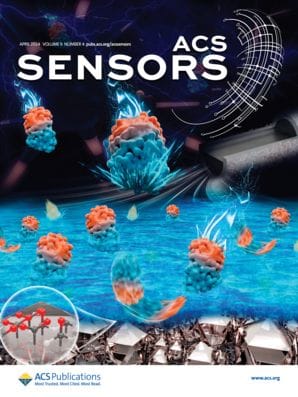It was a simple idea: a sun-protection solution that would let you know if you’re catching too many rays before you start to burn. It was so simple that J. Justin Gooding, Ph.D., a principal investigator at the University of New South Wales, didn’t even pursue it. He pressed on for several more years managing […]

It was a simple idea: a sun-protection solution that would let you know if you’re catching too many rays before you start to burn. It was so simple that J. Justin Gooding, Ph.D., a principal investigator at the University of New South Wales, didn’t even pursue it. He pressed on for several more years managing his lab’s many other surface chemistry projects, adding to his lifetime tally of over 300 science publications.
The idea stuck with him, however, and with the help of Parisa Khiabani, and colleagues Alexander Soeriyadi and Peter Reece, the project to develop a simple, paper-based sun-protection solution kicked-off in 2014. Their findings were published in May 2016, in the sixth issue of ACS Sensors, a new journal from the American Chemical Society. Their paper triggered a wave of media interest around the world.
A Simple Sun-Protection Solution
“We thought it was so simple that it wouldn’t even get picked up. But it’s really addressing a very specific sensing need,” says Gooding.
There is a pressing need for a simple sun-protection solution. One-in-five Americans will develop skin cancer during their lifetime. In Gooding’s backyard – Australia – the rates are even worse.
“We worry about sun in this part of the world,” says Gooding. At Australian beaches, you’ll see kids running around in shorts, hats and ‘rashies’ — essentially sun-proof tops that cover more skin at the beach.
Gooding’s solution is a simple paper-based sensor that reacts to UV radiation. It follows the ‘canary in the mineshaft’ principle; when you see the strip change color you know it’s time to get out of the sun — before you turn red yourself.
Many of us have been (literally) burned by overcast weather, a change in latitude or altitude, or an insufficient SPF-factor sunscreen. Simply put, sun damage risk is not always intuitive. All of these variables make the cost-effective, disposable strips immediately applicable. Gooding’s lab also found a way to customize the sensors to allow for person-to-person differences and their reactions to the sun.
“The laminate that we put on it controls how long it lasts. Through this, we can tune it to a skin color or an SPF factor,” says Gooding. The strip would be applied to the user like a band aid, to give them real-time information about their sun exposure.
An added benefit is that the lamination renders the product waterproof – an important feature for sun protection at the beach or lake. All of the materials are already approved for human use, which means this simple sun-protection solution is ready for commercialization.
“The idea worked the first time we tried it,” says Khiabani, first author of the ACS Sensors paper. “It was just fine tuning the product.”
Why ACS Sensors?
“The research idea is so simple,” says Gooding. It is, however, directly applicable and addresses an important unmet need.
The value of a simple, efficient sun-protection solution is evident in the amount of media coverage the research generated. Media in the U.S., Europe, and Australia have picked up the story.
“Since this publication, we’ve had a lot of people approach us. From little backyard operations to big companies,” says Gooding. “We’ve had some meetings to discuss potential partnerships with the likes of a sunscreen company. It’ll be interesting to see how far it comes with that commercialization pick-up.”
Learn more about ACS Sensors and read the journal article on the team’s sun-protection solution: Paper-Based Sensor for Monitoring Sun Exposure by Parisa S. Khiabani, Alexander H. Soeriyadi, Peter J. Reece, and J. Justin Gooding.
Watch Khiabani, the paper’s first author, explains the research project:
Check out samples of the news coverage their sun-protection solution received:
ABC News, Australia: New waterproof patch could alert users to excessive sun exposure
SBS/AAP: UV sensor will help prevent skin cancer
The Economist: Patched up
